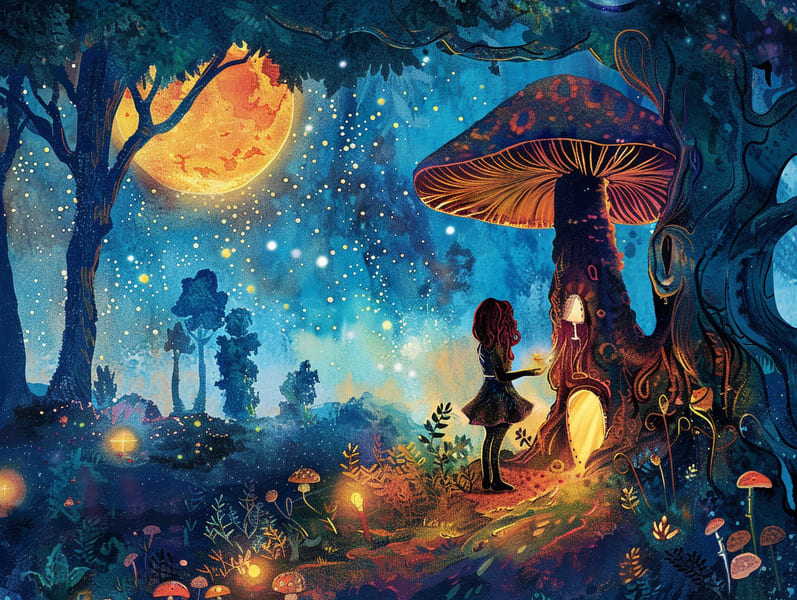The Journey of Best Fairy Tales with Their Eternal Delight.
The Journey of Best Fairy Tales with Their Eternal Delight.
Blog Article

Famous fairy tales have enduring presence. These narratives have been relayed from one generation to the next long before they were ever published. They arose from a variety of societies, including Indigenous traditions. They were initially narrated among older generations, often carrying themes and messages mirroring the societal norms and beliefs of the time.
The Brothers Grimm, Jacob and Wilhelm, were among the first to gather many of these beloved narratives. Their published works, "Grimm's Fairy Stories," included stories like "The True Bride," "Little Brother and Little Sister," and "The True Story of Snow White," which have since become cornerstones in the world of traditional fairy tales. Similarly, Hans Andersen's imaginative tales, such as "The Mermaid's Tale," and "The Little Duckling," have floated into hearts worldwide, establishing their place in the pantheon of classic fairy tales.
Despite their ancient origins, these tales remain as significant as ever, especially as kids' bedtime tales. These enchanting tales are now available in multiple formats, including richly illustrated books, charming animations, and online storybooks.
Their persistent charm can be credited to several enchanting factors:
Crucial Morals: Ancient fairy tales often share important moral lessons. Tales like "The Wolf and the Liar" teach the value of truth, while "The Race of the Tortoise and the Hare" illustrate the merits of determination and humbleness. These stories offer young readers clear distinctions between truth and falsehood, forming their moral compass in a kind yet important way.
Compassion and Knowledge: Classic fairy tales frequently feature heroes facing tests and troubles, fostering young listeners to comprehend with their struggles and boost their triumphs. For instance, "Beauty's Beast" points out the significance of valuing inner qualities to realize the real character of a being, developing understanding and perception.
Cultural Perception: Many fairy tales are rich in the cultural contexts from which they emerged. Understanding these fairy tales can provide delightful insights into different social structures, fostering a sense of cultural insight and knowledge.
Imagination and Creativity: The magical elements in timeless fairy tales—mythical entities—trigger children’s inventiveness. These narratives move readers to fantasy realms, motivating inventive thinking and a sense of fascination that persists more info a lifetime.
Ancient fairy tales are not only fantastical but also illuminating. They function as whimsical tools in cultivating various intellectual and emotional capacities in children. When ancient fairy tales are told out loud, they foster verbal skills by showing new terms and detailed sentence structures. This practice also advances hearing perception and mental focus, as kids pay close attention, ready to see what happens next.
Furthermore, exploring the themes and characters of traditional fairy tales can enhance thought processes and logical thinking. Young ones are educated to discover patterns, anticipate outcomes, and figure out cause and effect. These talks also encourage young readers convey their thoughts and feelings, nurturing their emotional intelligence.
In today’s technological era, the availability of online storybooks has made these stories more available than ever. Web platforms and web apps share vast collections of popular fairy tales that can be perused or played anytime, anywhere. Fairy tales told out loud are particularly sought after, extending an fun way for kids to relish these enchanting tales. Voice books and narrated videos move characters and settings to life, often enhanced by charming sound effects and music that intensify the storytelling journey.
The timeless charm of classic fairy tales lies in their ability to evolve to modern times while maintaining their essential themes. Contemporary adaptations of these fairy tales often spotlight more representative characters and modern settings, making them relevant to today’s audience. However, the essential messages of daring, understanding, and lawfulness remain unchanged, continuing to appeal to children of all ages.
Classic fairy tales also offer a sense of comfort and recognition. They introduce a well-ordered narrative with a transparent beginning, middle, and end, often coming to a close with the settlement of conflicts and the triumph of good over evil. This constancy can be solacing for little ones, yielding a sense of sturdiness in an fluctuating world.
Traditional fairy tales continue to enchant and train new generations, maintaining their splendor and pertinence in modern society. As bedtime stories for kids, they impart a perfect blend of captivation and insight, aiding moral values, empathy, and creativity. The presence of digital fairy tales and the well-liked nature of fairy tales narrated warrant that these classic narratives remain obtainable to new generations.
By defending and imparting these tales, we continue to treasure the rich tapestry of narrative artistry and cultural heritage. Whether you are perusing a richly illustrated book, viewing a web-based library, or hearing an narrated book, the captivation of popular fairy tales is always within reach. These stories show us of the invariable power of storytelling and its ability to gather us across centuries and lands.
Even if you are experiencing a richly illustrated book, perusing a digital library, or listening on an audiobook, the beauty of old fairy tales is always within reach.
These stories convey of the unfading magic of stories and its ability to gather us across epochs and places, casting a charm that delights and instructs alike.